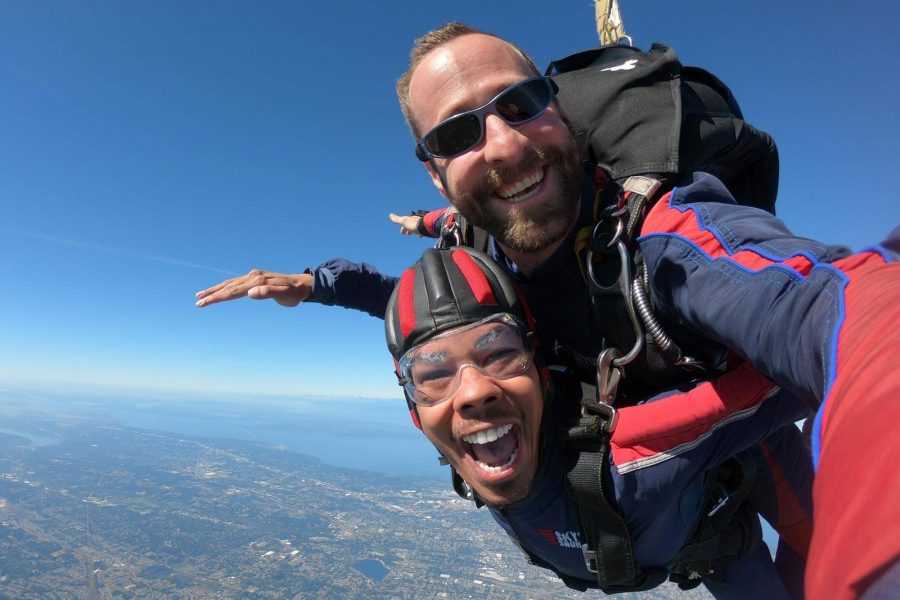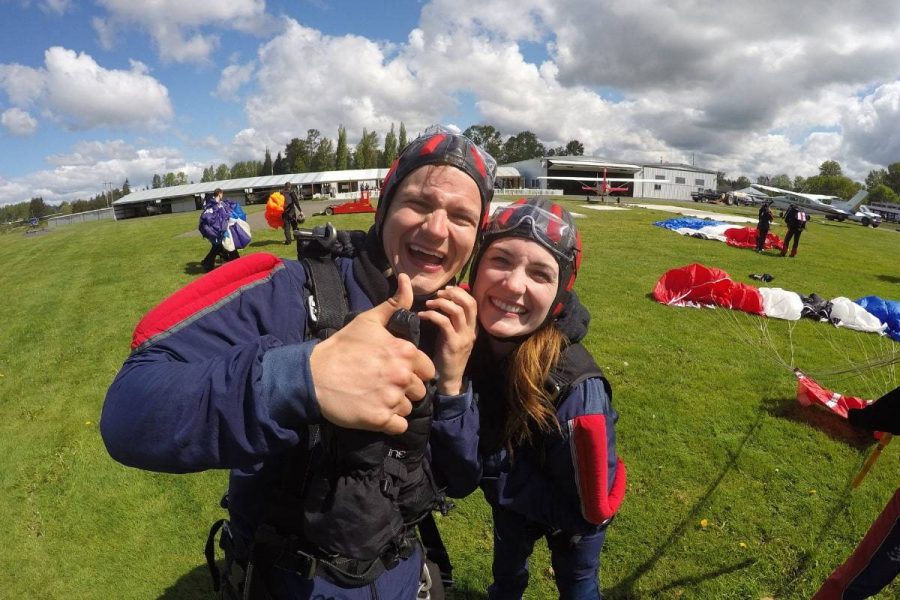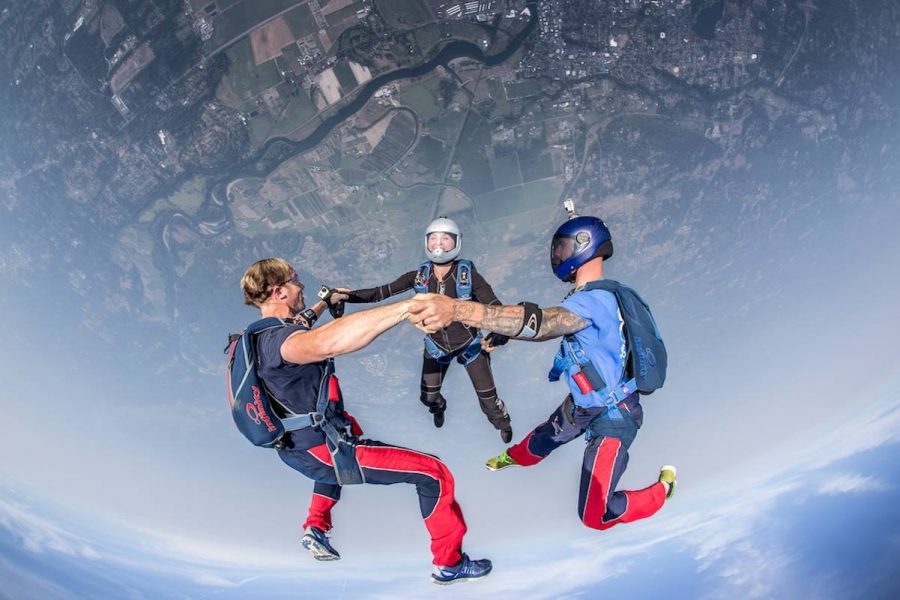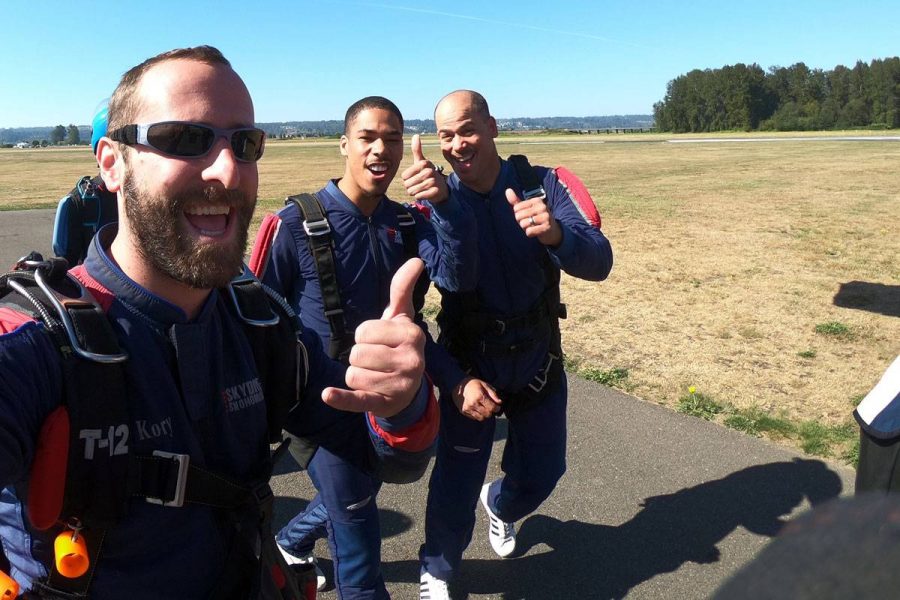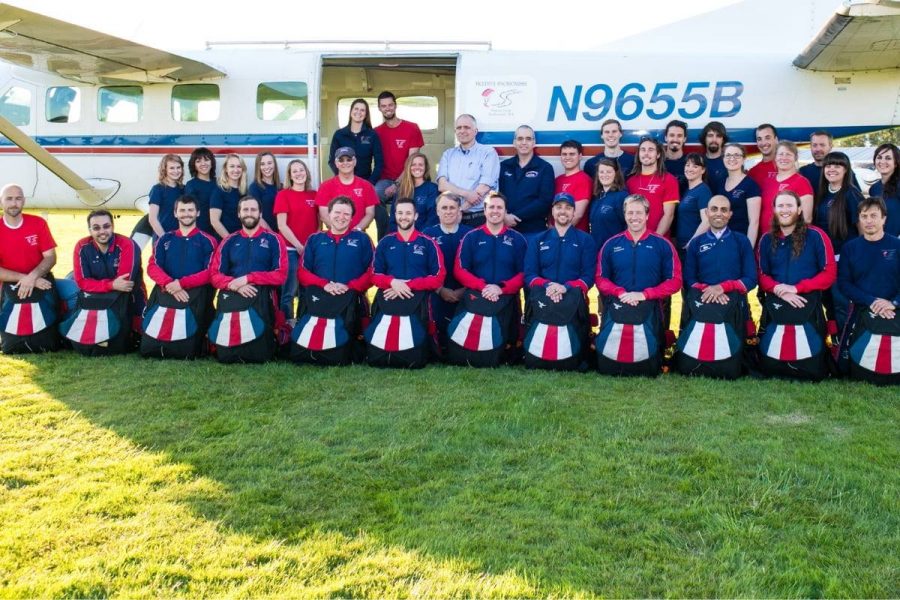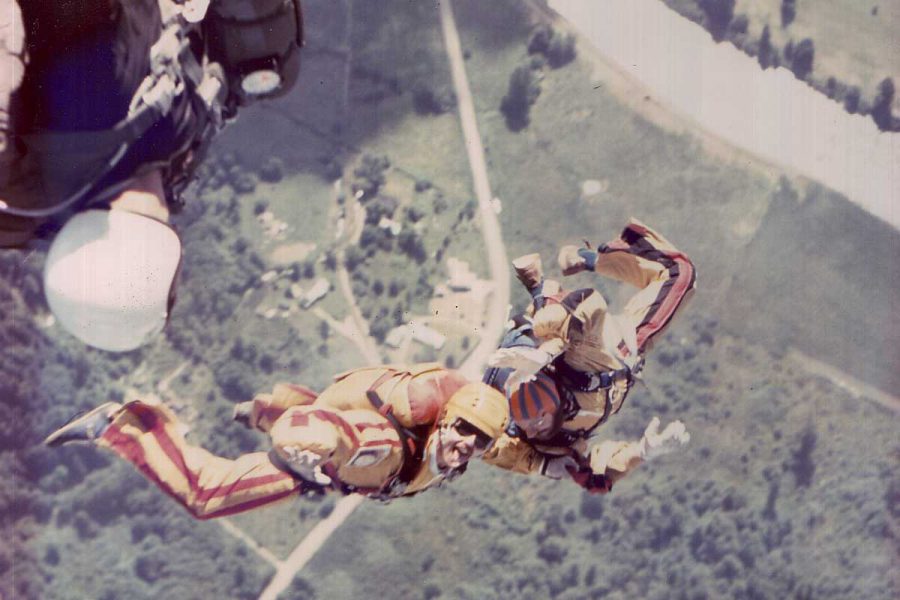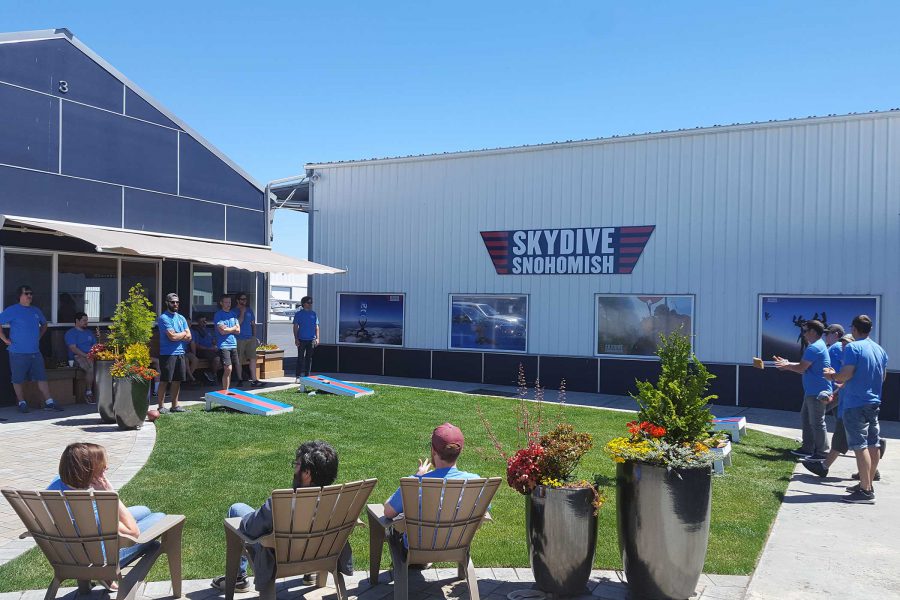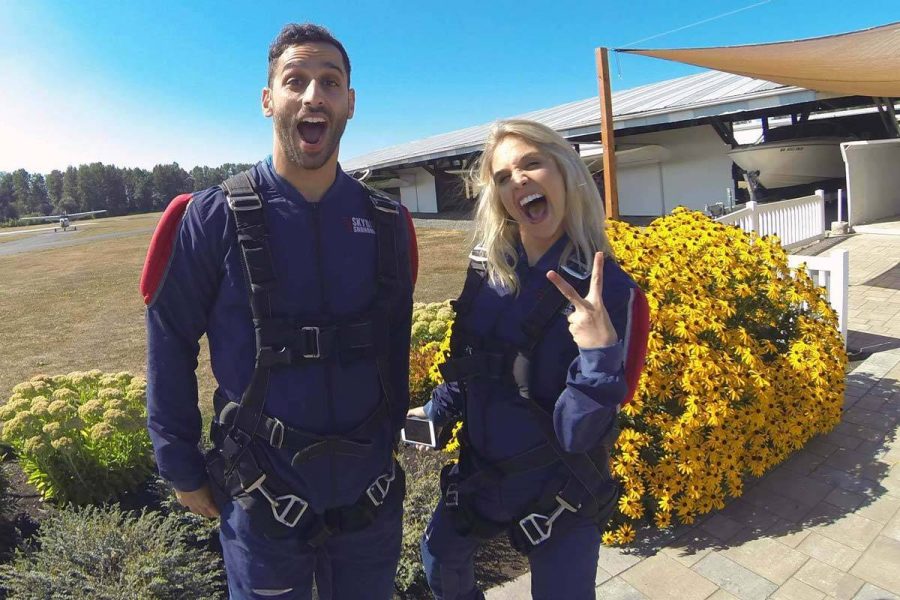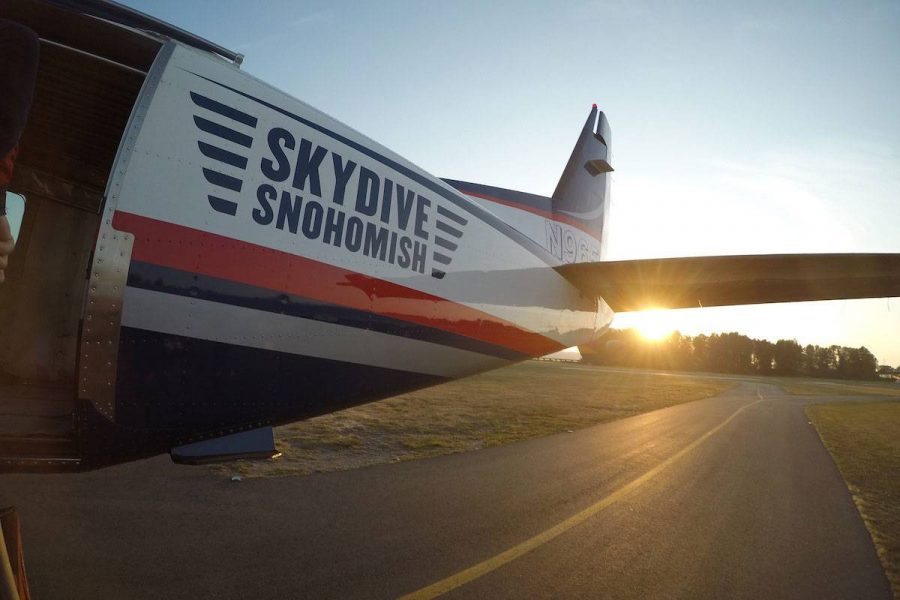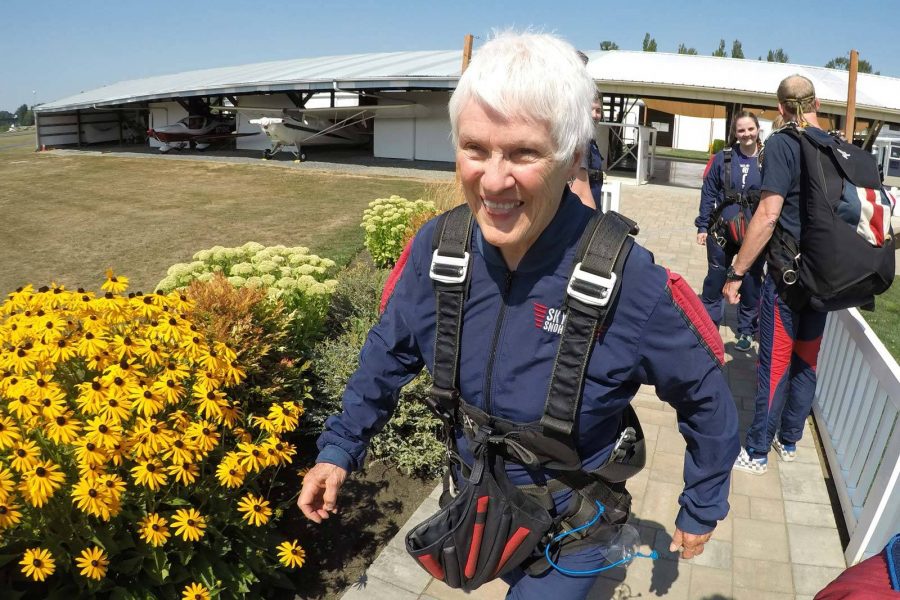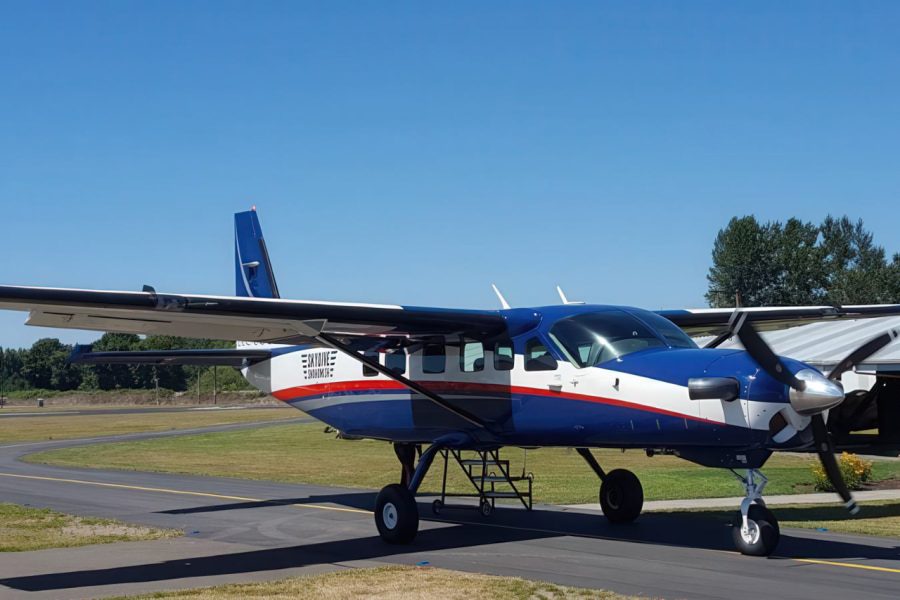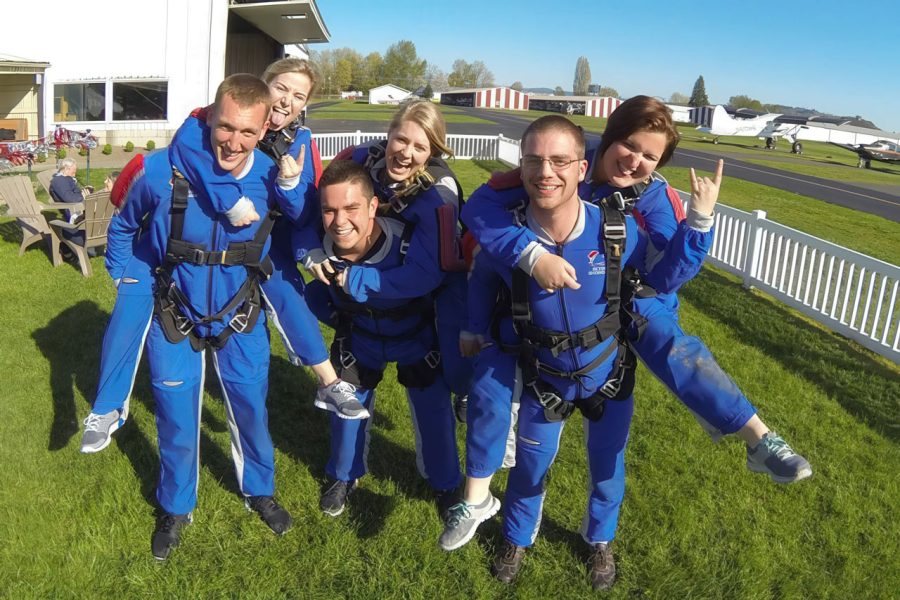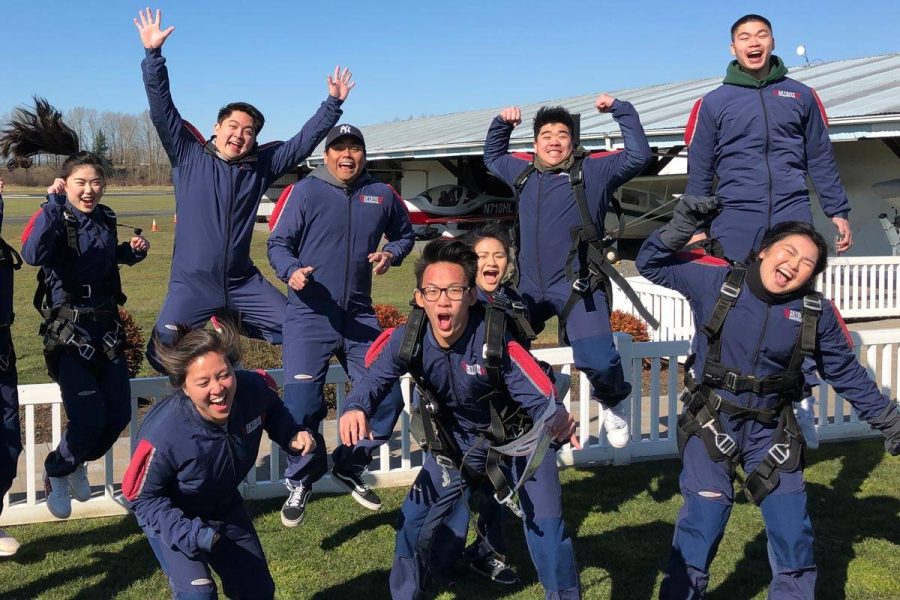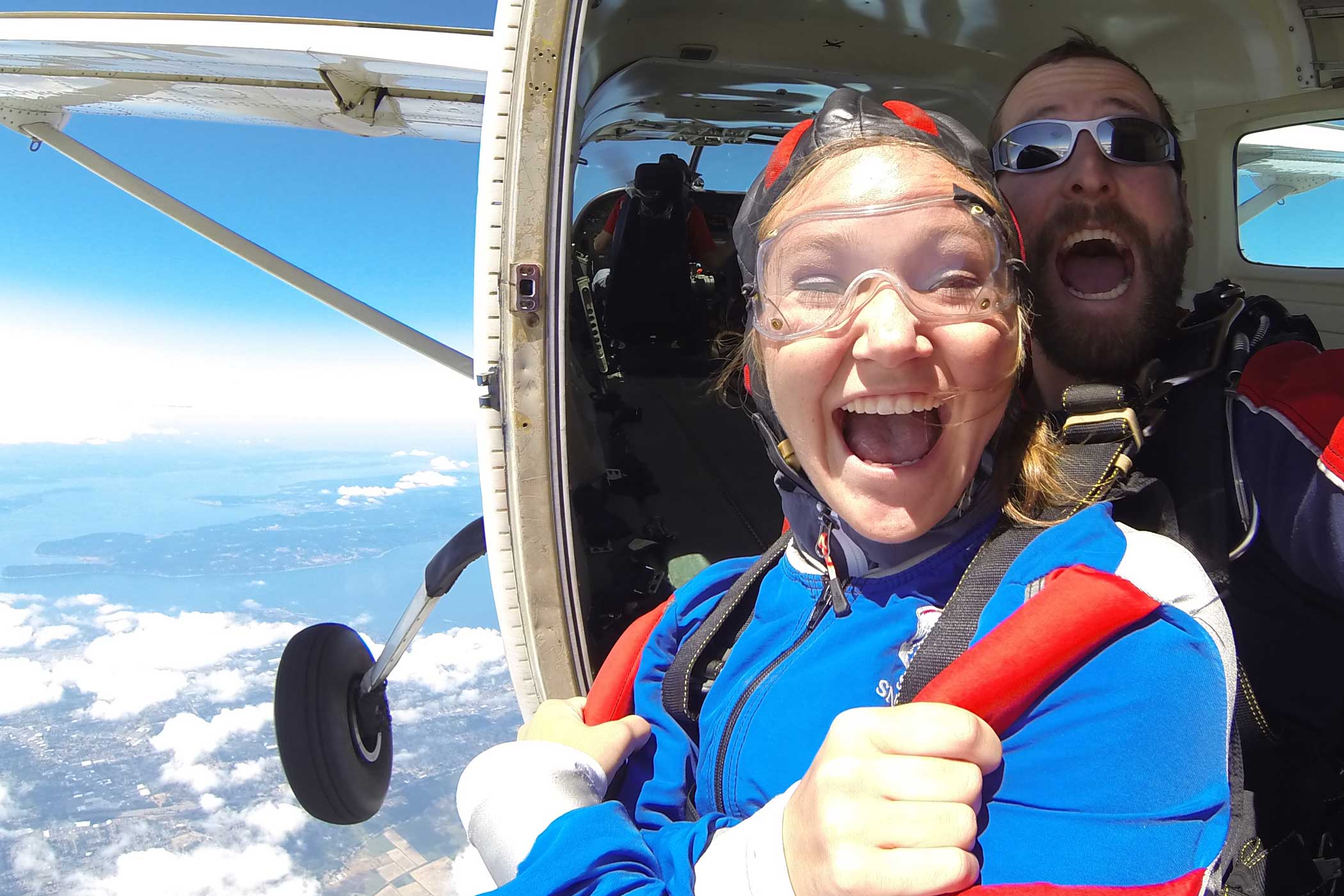Ready? Set? …
4 Things You May Want to Know Before You Go!
You’ve bought the ticket, and you’re ready to take the ride. Awesome. You’re in for one of the most exciting and memorable days of your life! To help you feel confident and prepared ahead of your big day, here are the answers to four of our frequently asked questions:
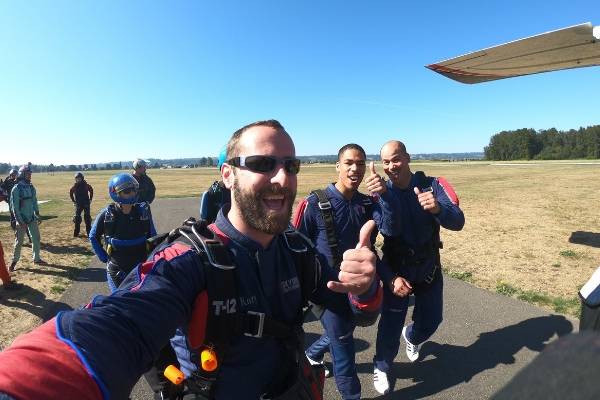 1. I’ve never jumped from a plane. How will I know what to do?
1. I’ve never jumped from a plane. How will I know what to do?
The vast majority of the nearly 20,000 people we see every year at Skydive Snohomish have never jumped from a plane. You’re in good company.
There’s no need to study before arriving at our dropzone at Harvey Field, we’ll teach you everything you need to know when you get here. And our highly trained and experienced tandem skydiving instructors will take care of the rest.
After you check in, you’ll head to our Ground School to complete a 30-minute class. Here you’ll watch a 15-minute video and learn directly from a tandem instructor to understand what will happen, who will do it, and when.
By the end of the session, you’ll feel familiar with our equipment, have a sense of how it works and its safety features, and you’ll have physically practiced the exit from the plane, body positioning for freefall, parachute control, and the proper landing position.
You’ll then “gear up” and prepare for “wheels up”!
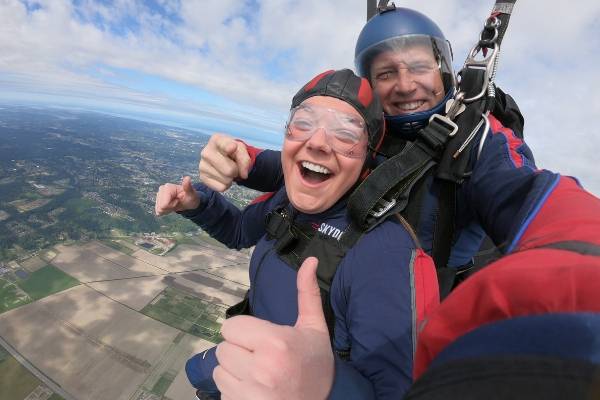 2. How should I prepare for my skydive?
2. How should I prepare for my skydive?
For an awesome day at the DZ, nothing beats a good night’s sleep, a fed belly and blue skies. You can’t control the weather, but we have some pearly words on how to prepare for your jump:
BRING YOUR ID
Jumpers must be between 18 and 65 years of age; persons over 65 are welcome with a Doctor’s Statement of Physical Fitness. Make sure you bring a valid, government-issued photo ID with you. No ID, no jump.
WEIGH YOURSELF
For safety reasons tandem students weight limit is 220 lbs, or 230 lbs if the individual is over 6 feet tall (with clothes and shoes on; not in the buff).
EAT
A hollow tummy will send jump-day jitters into the red zone, and an overly full one will make you bellyache for another reason. Nourish your body before you head to the DZ, and pack healthy snacks should you need a little something to tide you over.
DRINK WATER … NOT ALCOHOL
Dehydration is no one’s friend. Stay clear of alcohol after midnight the night before, and keep a bottle of water close at hand on jump day. Save your celebratory sip for when you’ve earned your certificate of achievement.
BE FLEXIBLE
Between ground school and your actual jump, it only takes about an hour to skydive – but plan on spending up to 2.5 hours with us to allow for delays due to weather and airspace traffic. Check our website two hours ahead of your class for a weather report so you can make a timing or rescheduling decision, if necessary.
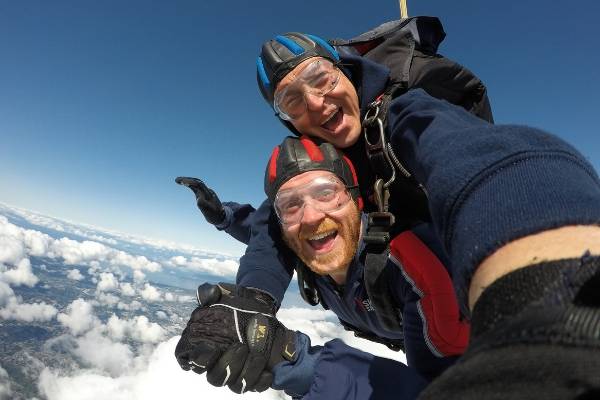 3. Who Will I Be Strapped To, And How Can I Be Sure They’re Adequately Trained?
3. Who Will I Be Strapped To, And How Can I Be Sure They’re Adequately Trained?
Skydive Snohomish is a member of the United States Parachute Association (USPA). Founded in 1946, the USPA sets the standard for the basic safety requirements for its member dropzones.
To be a tandem instructor, you have to hold a D License – the most advanced skydiving license achievable. To earn your D, you have to complete Accelerated Freefall Progression and staunch requirements for the A through D Licenses.
All told, tandem instructors have at least 500 jumps (and many have a LOT more), at least 3 years in the sport, and are certified to do a whole host of cool stuff – including packing their own parachutes; landing on water; jumping at night and from helicopters, hot air balloons and high altitudes; and participating in demonstration and exhibition jumps.
In short, tandem instructors are legit sky ninjas. You’re in very capable hands.
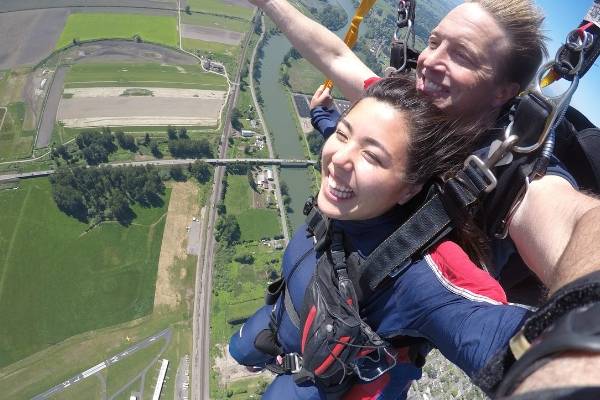 4. What equipment do you use, and how often is it inspected?
4. What equipment do you use, and how often is it inspected?
At Skydive Snohomish, we are committed to the highest standards in safety and professionalism. We’ve been in the aviation business since the 40s, and have been skydiving over Harvey Field since 2000. When it comes to safety, we’re not messing around.
Professional parachute packers prepare our tandem rigs. The anatomy of a rig is complex, but the aspects of most interest tend to be:
PARACHUTES
Yep, there’s actually two parachutes on every skydiver’s back. The main parachute – or canopy, as skydivers call it – is the one you’re picturing in your head. Big, rectangular, glorious. The reserve is a second canopy that’s deployed only if the main malfunctions.
AAD
The Automatic Activation Device – or AAD as it’s commonly called – is a tiny little thing with a huge job. About the size of a thumb drive, the AAD automatically deploys the reserve chute if no canopy has been activated by a predetermined altitude. At SkySno, we’re loyal to the CYPRES brand of AADs because their technology is superior and their products are internationally respected.
Tandem students are attached to all this tried-and-true gear by a harness that’s securely fastened to the tandem instructor:
HARNESS
Straps and pads on the harness allow for people of different heights, sizes and shapes to jump – but it’s not one size fits all. For the safety of our guests and instructors, tandem students must weigh less than 220 lbs to jump at Skydive Snohomish, or less than 230 lbs if you are 6ft or taller.
If you have any additional questions about your first skydiving experience, get in touch! We are here for you. At Skydive Snohomish, flight is life. The only thing we love more than flying is sharing it with others. Come jump with us!
